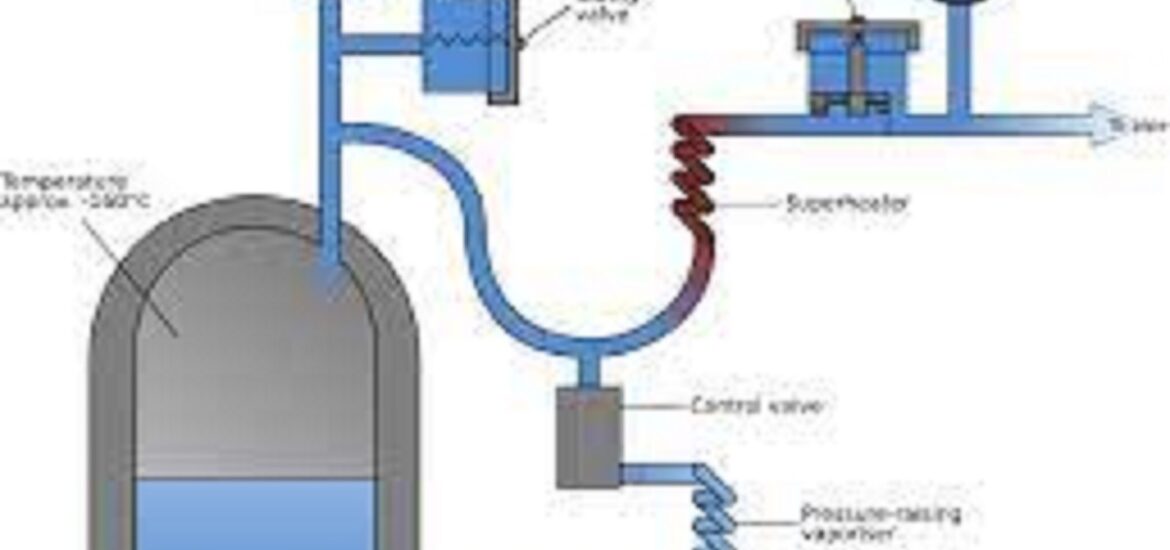Evaporator leak test – ever heard of it? If you’re involved in the refrigeration or air conditioning industry, chances are you have. But why is it so important? Well, detecting leaks in the evaporator system ensures optimal performance, efficiency, and safety while maintaining environmental standards. So, let’s dive right in and explore the world of evaporator leak tests!

Table of Contents
Purpose of Evaporator Leak Test
Did you know that evaporator leaks can cause a whole host of problems? The main purpose of evaporator leak tests is to:
- Detect leaks in the evaporator system
- Ensure optimal performance and efficiency
- Maintain safety and environmental standards
Types of Evaporators
There are several types of evaporators, including:
- Forced circulation evaporator
- Natural circulation evaporator
- Film evaporator
- Falling film evaporator
Read more about evaporators here – – Evaporators in Refrigeration: Easy Guide to Understanding Your Fridge’s Unsung Hero
Preparation for the Test
Required Tools and Equipment
Before you get started with the evaporator leak test, you’ll need the following tools and equipment:
- Leak detection equipment (e.g. electronic leak detector, ultrasonic leak detector, or leak detection dyes)
- Safety gear (e.g. safety goggles, gloves, and protective clothing)
- Repair tools and materials (e.g. wrenches, screwdrivers, and replacement parts)
Safety Precautions
Don’t forget about safety! Keep these precautions in mind:
- De-energize the system before testing
- Properly ventilate the area
- Follow the manufacturer’s guidelines for handling refrigerants
Evaporator Leak Detection Methods
Electronic Leak Detection
Electronic leak detection is a popular method for detecting evaporator leaks. Here’s what you need to know:
- Description of the method: Electronic leak detectors work by sensing refrigerant gases in the air and sounding an alarm when they are detected.
- Pros and cons: Electronic leak detectors are highly sensitive and accurate, but they can be expensive and require regular calibration.
- Step-by-step procedure: Turn on the detector, move it slowly around the evaporator, and listen for an alarm indicating a leak.
Ultrasonic Leak Detection
Ultrasonic leak detection is another option for finding evaporator leaks. Here’s the rundown:
- Description of the method: Ultrasonic leak detectors pick up high-frequency sounds produced by leaks, which are then amplified and converted into audible sounds.
- Pros and cons: Ultrasonic detectors can detect even small leaks but may be affected by background noise.
- Step-by-step procedure: Turn on the detector, place the probe near the evaporator, and listen for the characteristic sound of a leak.
Leak Detection Dyes
Leak detection dyes are another way to identify evaporator leaks. Let’s explore this method:
- Description of the method: Leak detection dyes are added to the refrigerant, which then circulates through the system. Leaks can be identified by the visible dye escaping from the system.
- Pros and cons: Dyes are relatively inexpensive and easy to use, but they may not be as effective at detecting small leaks as other methods.
- Step-by-step procedure: Add the appropriate dye to the refrigerant, run the system, and inspect the evaporator for visible dye escaping from leaks.
Analyzing Test Results
Interpreting Leak Detection Results
So, you’ve performed your evaporator leak test – now what? Here’s how to interpret your results:
- Identifying leak locations: Look for evidence of leaks in the form of alarms, ultrasonic sounds, or visible dye.
- Assessing the severity of leaks: Consider factors such as the size and location of the leak, as well as the amount of refrigerant loss.
- Determining the need for repairs or replacements: Evaluate whether the leak can be repaired or if the evaporator needs to be replaced.
Documenting Test Findings
It’s important to document your test findings for future reference or to share with maintenance personnel or management:
- Recording leak locations and severity: Note the exact location and size of any leaks discovered.
- Preparing a detailed report: Compile your findings into a comprehensive report, including any recommended actions.
Repairing and Preventing Evaporator Leaks
Repairing Detected Leaks
Once you’ve identified a leak, it’s time to take action:
- Proper techniques for repairing various types of leaks: Follow industry best practices and manufacturer guidelines for repairing leaks.
- Replacing damaged or worn components: Replace any damaged or worn parts that may be contributing to the leak.
- Verifying repairs through follow-up testing: Perform a follow-up evaporator leak test to ensure the leak has been resolved.
Preventative Maintenance
To minimize the risk of future leaks, implement preventative maintenance measures:
- Regular inspection and maintenance schedules: Establish a routine schedule for inspecting and maintaining your evaporator system.
- Identifying and addressing potential problem areas: Proactively address areas that may be prone to leaks, such as connections or seals.
- Implementing best practices to minimize the risk of future leaks: Follow industry guidelines and manufacturer recommendations for preventing leaks.
Conclusion
Importance of Evaporator Leak Testing
In conclusion, evaporator leak testing is essential for ensuring optimal system performance, protecting the environment, and saving energy and reducing costs. So, don’t overlook the importance of regular evaporator leak tests – your system, your wallet, and the planet will thank you!